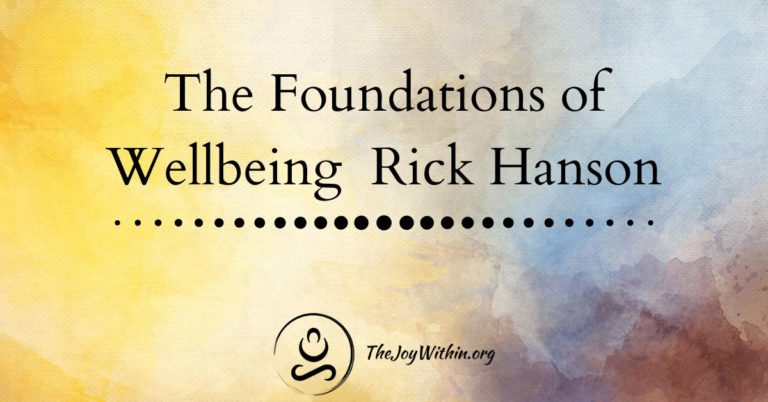Rick Hanson is a psychologist who studies and teaches how we can actually physically change our brains for our own wellbeing. He is the author of many self-help books such as Buddha’s Brain and Hardwiring Happiness.
He commonly teaches how deeply meditation impacts the brain and how we can use mindfulness techniques to restructure our lives and as his book says, hardwire happiness. Below are some of his teachings on mindfulness that you can get started with today!
Practice Resting In Awareness
Rick Hanson gives the example of imagining that you have just arrived home after a long and productive day of hard work. Once you come home you find a comfortable position and sit down to rest.
You are present, but not attached to any of the sights, sounds, or smells surrounding you. Your focus is very much anchored on resting and relaxing. You notice there isn’t much of a drive to get up or produce action but to simply rest.
This imagined state can show you how to let go of attaching to thoughts or feelings and simply allow them to pass through your awareness. If you would like to follow along with some of Rick Hanson’s guided meditations click here!
Rick uses this example as it is a great entrance to begin expanding awareness and reducing the drive to hyperfocus upon the contents of the mind or even external stimuli.
Taking In The Good
This mindfulness practice arises when you notice an opportunity to tap into feelings of happiness, joy, bliss, or anything good. Whether this is stimulated from a compliment you were told, enjoying the weather, or completing a task successfully sit with these sensations.

Sit with them for as long as you can and with a goal of at least 20 seconds. Take your time to amplify these feelings and place your focus fully upon them. We go deeper into the benefits of taking in the good here if you want to learn more.
Mirror Mirror
This technique requires the use of your imagination as well as activating your mirror neurons. Mirror neurons are specific neurons that activate the same pattern in our brain as what we watch someone do in front of us.
This means that our brains simulate the same activity internally to what we see someone doing externally. This includes while watching an action movie, seeing a stranger smile, or even a close friend’s arm movements.
Mirror neurons fascinatingly are natural and automatic while watching someone. Science has even shown that during visualizations the neurons within our brain interpret visualizations the same as real-life events, stimulating the same hormone production as if this were actually happening.
One of Rick’s suggests teachings of mindfulness is to picture someone who is extremely focused, present, and mindful. Create a sense within your body of how it would feel to view life through the perspective you imagine them to view it through.
Use your empathy systems in order to bring yourself into the mindful state of awareness you watch this person perceive life in. Of course, you can also practice this with other qualities such as patience, great speaking skills, and outgoing nature.




